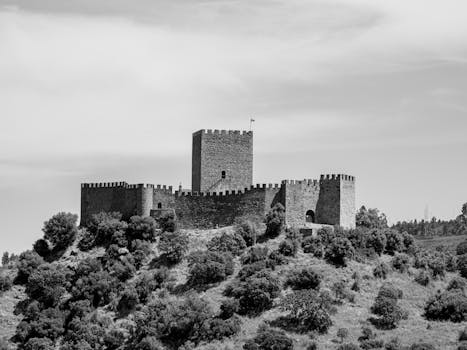
Traveling Through Time: How Europe’s Historical Heritage Shapes Modern Lifestyles in 2025
Europe’s historical heritage is a treasure trove of timeless influences that continue to shape modern lifestyles in 2025. As we travel through the continent, we find that the past is intricately woven into the fabric of everyday life, from the architecture that surrounds us to the art, culture, and cuisine that we enjoy.
Introduction to Europe’s Historical Heritage
Europe’s historical heritage is a rich and diverse tapestry of cultures, empires, and civilizations that have risen and fallen over the centuries. From the ancient Greeks and Romans to the Renaissance and beyond, each era has left an indelible mark on the continent’s landscape, architecture, and way of life. As we explore Europe’s historical heritage, we begin to understand how the past continues to shape the present and inform the future.
Architecture and Urban Planning
One of the most visible manifestations of Europe’s historical heritage is its architecture and urban planning. Cities like Rome, Paris, and Vienna are treasure troves of ancient, medieval, and modern buildings that reflect the continent’s complex history. From the Colosseum to the Eiffel Tower, and from Gothic cathedrals to Baroque palaces, Europe’s architectural heritage is a testament to the ingenuity, creativity, and perseverance of its people. As we wander through Europe’s cities, we find that the past is palpable, with ancient ruins, historic landmarks, and modern buildings blending seamlessly into the urban landscape.
Art, Culture, and Cuisine
Europe’s historical heritage is not just about buildings and monuments; it is also about the art, culture, and cuisine that have evolved over the centuries. From the Renaissance masters to modern artists, Europe has been the cradle of some of the world’s most iconic and influential art movements. The continent’s cultural heritage is equally rich, with a diverse array of festivals, traditions, and customs that reflect the complexity and diversity of its history. And then, of course, there is the cuisine – a delicious blend of flavors, ingredients, and cooking techniques that have been refined over centuries. As we explore Europe’s art, culture, and cuisine, we find that the past is a constant source of inspiration, innovation, and enjoyment.
Modern Lifestyles and the Influence of Historical Heritage
So, how does Europe’s historical heritage shape modern lifestyles in 2025? The answer lies in the countless ways in which the past informs the present. From the architecture that surrounds us to the art, culture, and cuisine that we enjoy, Europe’s historical heritage is an integral part of modern life. As we travel through the continent, we find that the past is not just a relic of bygone eras; it is a living, breathing entity that continues to evolve, adapt, and inspire. Whether we are exploring ancient ruins, attending cultural festivals, or savoring local cuisine, Europe’s historical heritage is a constant reminder of the continent’s rich cultural diversity and its enduring influence on modern lifestyles.
Conclusion
In conclusion, Europe’s historical heritage is a timeless treasure that continues to shape modern lifestyles in 2025. As we travel through the continent, we find that the past is intricately woven into the fabric of everyday life, from architecture to art, culture to cuisine. Whether we are exploring ancient ruins, attending cultural festivals, or savoring local cuisine, Europe’s historical heritage is a constant source of inspiration, innovation, and enjoyment. As we look to the future, we can be sure that Europe’s historical heritage will continue to play a vital role in shaping modern lifestyles, informing our understanding of the world, and inspiring new generations of artists, innovators, and explorers.


